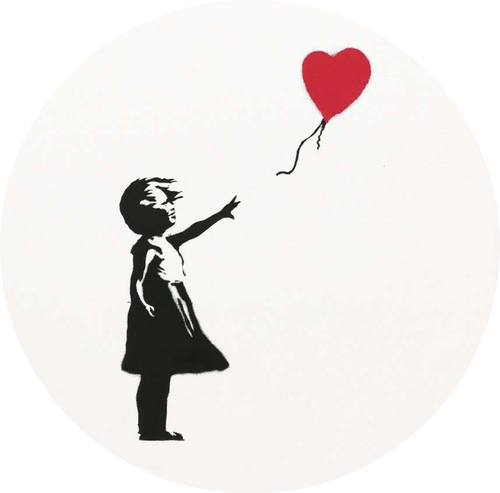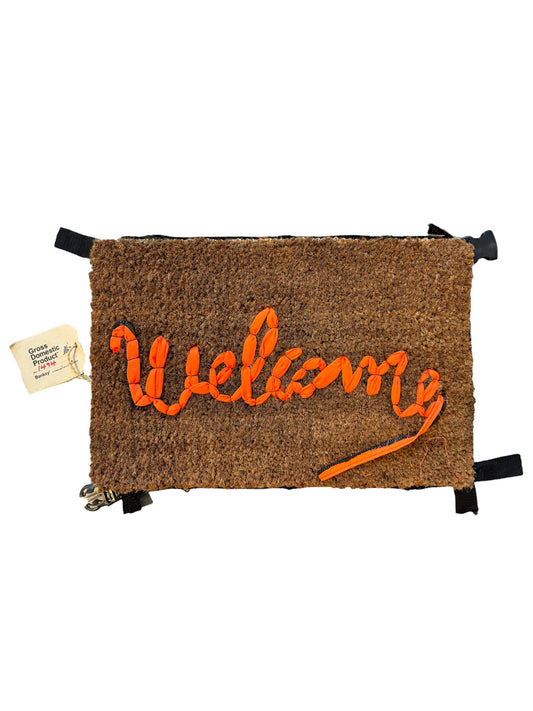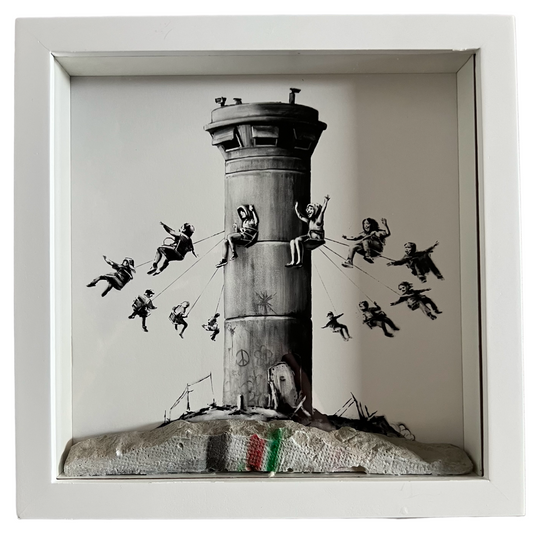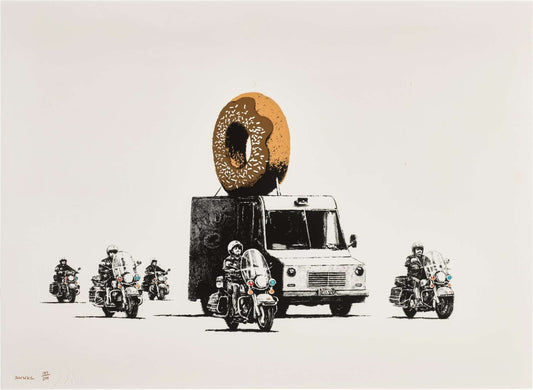
Banksy
But who really is Banksy? The colleague Mr. Brainwash of whom, the artist himself, directed the very famous documentary Exit Through The Gift Shop or the Massive Attack singer Robert del Naja, suspected for the strange correspondence between the appearance of new murals and the dates and places of his concerts. As if to say...where there is Robert del Naja there is always also a (new) Banksy.
There is also the Robin Cunningham version, whose name was arrived at by a pool of scholars from Queen Mary University of London, deploying the tools used to capture serial killers.
The truth is that, in the end, Banksy is Banksy and he proved to the world that you can be famous even in total anonymity. An anonymity, paradoxically, truly known by everyone like the Mona Lisa, the Vitruvian Man and Monet's Water Lilies. Which, for the record, were remade by the artist and filled with shopping carts and waste from the most uncivilized modern society.
His subjects, children holding balloons, rats, monkeys, policemen, elderly people, politicians and even the Royal Family have earned a well-deserved status as icons of contemporary art.
Immediately recognisable, and understandable, they remind the opulent Western world of all those problems of an ethical, social and moral nature which often make us turn our faces the other way: wars, poverty, AIDS, corrupt and incompetent politicians and pollution.
A bit like Sweep it Under the Carpet where a maid in uniform raises the wall as if it were a curtain and hides the dust.
Banksy's works speak of humanity to humanity and have always done so using cities as canvases: walls, bridges, metro stops, exteriors of galleries.
Sometimes it happens that diligent workers responsible for bourgeois urban decorum erase his masterpieces. It happened in Pulp Fiction in the Old Street subway, victim of the mural where Samuel L. Jackson and John Travolta held two bananas instead of guns.
His creations are made with stencils, a street technique loved for the speed of execution - writers never have much time - where spray paint is applied to a previously created paper pattern (stencil), which like a mold gives life to the 'metropolitan fresco.
The originals, not all of them, however, are then replicated for the general public in signed and unsigned copies which, needless to say, literally sell like hot cakes.
However, when the original itself is auctioned off, specialists intervene to remove it from the wall and transfer it to a support.
A wizard of installations, in 2015, together with Damien Hirst, Jenny Holzer and Jimmy Cauty, Banksy took over an abandoned resort in an English seaside town and transformed it into Dismaland, an anti-Disneyland which, more than an amusement park, seems like a horror park. The visitors, never more than 400 a day and with a regular 20 pound ticket, found themselves in front of Cinderella who, after being involved in a fatal car accident, is attacked by paparazzi eager for the scoop of a lifetime. Or the little mermaid, transformed into a monster due to polluted seas, to name two.
Even before the advent of NTFs and the dematerialisation of art, Banksy installed a mechanism similar to those of paper shredders in one of his Girl with Balloons and activated it a few seconds after the work was sold at Sothebys for 1 and a half pounds. A protest against the art system which, paradox of paradoxes, has made the value of the shredded work skyrocket even more.
Some very lucky people were able to win some of his prints for 500 pounds, in a provocative pop-up shop that opened one night in the colorful London district of Croydon. The Gross Domestic Shop, this was its name, was strictly forbidden to the public and its works, subject to price restrictions, could be purchased online by a very lucky few drawn from among the thousands of candidates.
The owner of the Prince Albert pub in Trafalgar Street has sold a mural depicting two Scotland Yard officers caught in a romantic gay kiss for £575,000. The work, damaged several times by other writers, brought the armed forces into play in support of minorities while also telling, this time without irony, the strong human relationship between the comrades of the same team.
Secret exhibitions where spectators found themselves welcomed by fully painted elephants, touching scenes such as the famous Vietnamese girl fleeing from the Naplan attack at the hands of Ronald Mc Donald and Mickey Mouse created for children by those same Americans who did not hesitate to exterminate the splendid population of Vitenam, are the norm for Banksy.
Modern Robin Hood who must not steal, he created murals to help migrants and voluntary associations for the weakest. Impossible not to be on his side.
We only know about him that he was born in Bristol in 1974 and began creating in the Barton Hill youth centre, before moving to London in 2000 and starting his dazzling career.
And honestly, that's enough for us. His greatness, his humanity, his mastery and the courage to talk about what, deep down, makes us uncomfortable, make him one of the most brilliant and powerful living artists.
To certify Banksy's works there is PEST CONTROL, the only body authorized for authentication.
It goes without saying that the number of unique pieces is close to or exceed one million. Signed copies, depending on the subject, start from one hundred thousand while unsigned prints can still be purchased for zero prices. Buying Banksy, as well as being an honour, is an investment with zero risk and the prospect (for those who have the courage to part with it) of very high returns. First of all, to become, by right, part of the elite of the most important collectors in the world.
VAT and customs clearance tax (approximately 10% of the value) must be added to the prices of the works, both to be paid by the buyer. All works sold by Daniele Comelli Art have PEST CONTROL certification.
The artist's works
-
Vendor:Banksy
Banksy™ Welcome Mat
Regular price €3.500,00Regular priceUnit price / per -
 Sold outSold out
Sold outSold out -
Sold out
-





